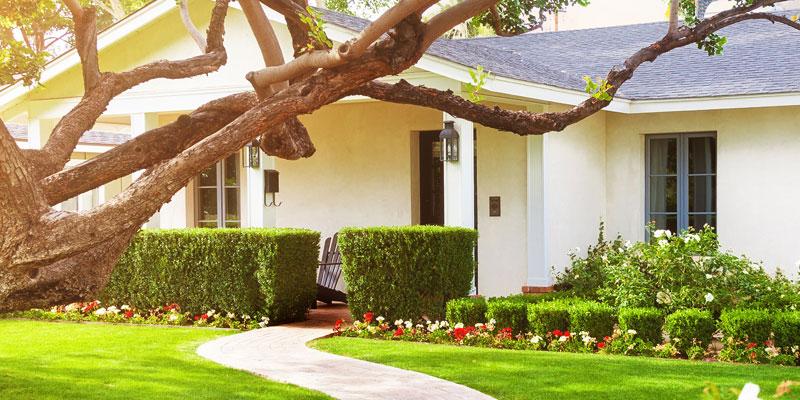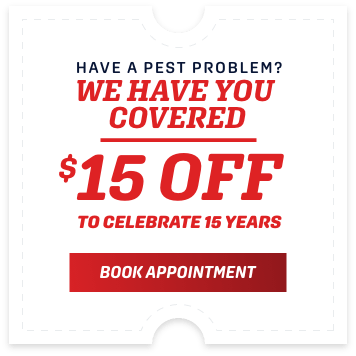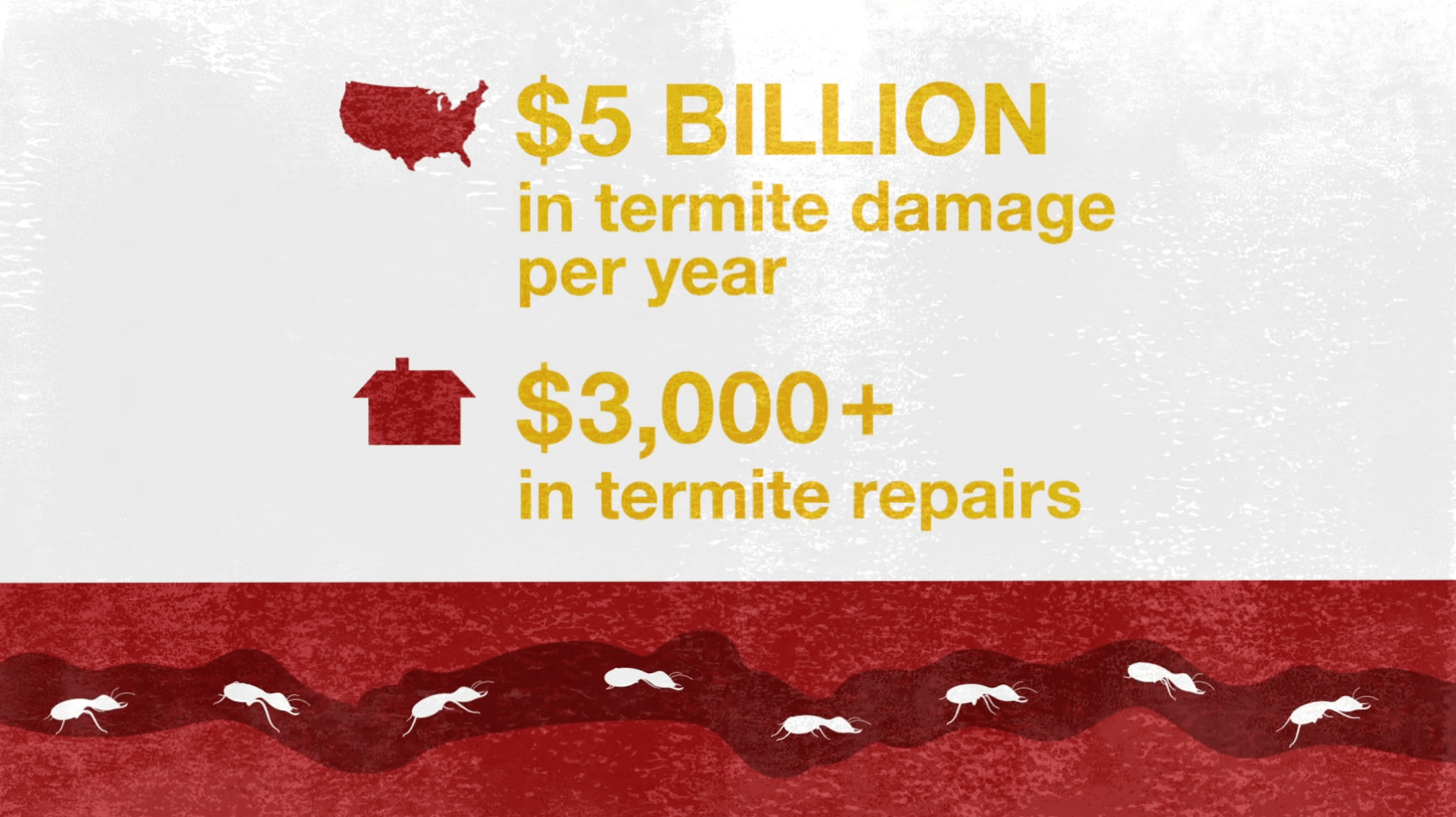Termites are a concern in Louisiana, where the weather creates perfect conditions for infestations, which can severely damage your home.
At LaJaunie’s Pest Control, our termite control services are designed to protect your property from these destructive pests.
SCHEDULE YOUR TREATMENT TODAYTargeted Termite Control in Louisiana
In Southern Louisiana, homes are threatened by Formosan termites. We explain this by saying that homes here either:
- Have termites,
- Will get termites,
- Or have had termites and will get them again.
We take termite control seriously, recognizing that their destructive nature causes over $5 billion in damage nationwide annually.
Our team is certified by the Louisiana Department of Agriculture and is trained on the latest industry standards. We provide specialized termite control made to protect Louisiana homes.
"*" indicates required fields
LaJaunie’s Pest Control Reviews



Long-Lasting Perimeter Defense Guarantee
- Initial Inspection: We perform a free termite inspection to detect current or past signs of infestation.
- Precise Treatment Application: Our advanced Trelona A.T.B.S. system treats soil and foundation areas, exterminating termite colonies and preventing future invasions.
- Ongoing Vigilance: Maintain your plan and receive annual inspections and necessary spot treatments at no extra charge. Spot a termite issue between visits? Call us at 985-859-7378, and we’ll quickly return at no extra charge.
Protecting Against Multiple Termite Species
Trelona® stands out by controlling various termite species, including the destructive Formosan subterranean termite. We use the Trelona® Advanced Termite Baiting System (A.T.B.S.) to prevent, maintain, and eliminate all subterranean termite colonies surrounding your home.
Advanced Trelona® ATBS Annual Termite Systems
Free Termite Inspections in Louisiana
LaJaunie’s makes the entire process EASY for you. We’ll conduct a free termite inspection for your home to determine if you have an infestation and its severity. Our termite exterminators are trained to identify the type of species and provide you with treatment options.
Bundle Termite Control With Pest Control and Save!
Get our Complete Protection Package, a cost-effective solution that combines general pest control with termite protection to save you time and money.
It also includes an added 10% in savings. Here’s how it works:
- Comprehensive Inspections: Regular termite and pest inspections to find the best protection strategy.
- Integrated Pest Management: Treatments to handle pests inside and outside your home.
- Satisfaction Guaranteed: We address any concerns between scheduled services at no extra charge with a 100% satisfaction guarantee.
Renew for Continuous Protection
Keep your protection active with yearly renewals, including inspections and termiticide applications. Enrolled homes benefit from additional treatment in the event of termite detection and possible reimbursement for termite damage repairs.
Pre-Construction Termite Control

Pre-Construction Termite Control
For Property Owners and Contractors
Whether protecting a new home or offering services to our clients, LaJaunie’s provides reliable, high-volume termite control solutions with reasonable pricing and no travel fees. Contact us today for a free estimate.
Termite Warranties for Peace of Mind
Our termite warranties range from one to ten years, providing return treatment guarantees and damage repair coverage up to $1,000,000. These transferable warranties add value to your property, enhancing its appeal in the competitive real estate market.
Estimate
- Identify Issue
- Discuss Solutions
- Affordable Pricing
Agreement
- Same day scheduling
- Payment plan option
- Sign digital agreement
Service
- In-Depth inspection
- 5 star treatment
- Issue solved
You
- Pest free environment
- Full transparency
- Re-Treat guarantee
Kirsten is an excellent, very thorough professional technician! She is always prompt an personable.
Areas We Service
LaJaunie’s Pest Control was founded 15 years ago. Since then, we’ve provided termite control to our neighbors here in Louisiana. Throughout our decade of service, we’ve seen it all. We know the termites in Louisiana better than anyone else. When you partner with us for termite treatments, you partner with local experts. Our expertise in termite control is available throughout locations in the River Parishes, including:
The Best Customer Service in Louisiana
At LaJaunie’s Pest Control, customer service is essential to us. We refer to ourselves as a customer service company that kills bugs. Our emphasis on quality service is ingrained in every part of our company. From start to finish, you’ll see what sets us apart. Our clients even gave us a 4.9-star average rating because of our quality service. We’ll always do what it takes to make our customers happiest!
Termite Control FAQs
Look for wood damage, mud tubes on exterior walls, swarms of winged insects, or discarded wings. Termites are sneaky, but these signs can be a giveaway. If you notice any of these in your home, it’s time to call us at LaJaunie’s Pest Control.
In Louisiana, we mainly deal with subterranean and drywood termites. Subterranean termites live underground and create mud tubes for movement, causing damage over time. Drywood termites live within the wood they consume and are often found in attic spaces. Both types can cause significant damage, but their treatment and control strategies differ.
At LaJaunie’s Pest Control, we start with a thorough inspection to identify the termite species and the extent of the infestation. Based on our findings, we’ll recommend a tailored treatment plan, which may include soil treatments, baits, or direct wood treatments, to effectively eliminate the termites and protect your home.
Yes, the safety of your family and pets is our top priority. We use environmentally friendly and safe methods for termite control. Our treatments are designed to target termites effectively while ensuring the safety of your home’s occupants.
In Louisiana, we recommend a professional termite inspection at least once a year. Our climate is conducive to termite activity, so regular inspections can help catch infestations early and prevent significant damage to your property.
Keep wood away from your home’s foundation, maintain a dry environment by fixing leaks, and ensure proper ventilation in crawl spaces and attics. Regularly inspect your home for signs of termites, and don’t hesitate to call LaJaunie’s Pest Control for a professional evaluation.
Yes, we offer a satisfaction guarantee with our termite control services. If termites return, so do we. Our goal is to ensure your home remains termite-free, and we stand behind our work with solid guarantees and warranties.
Absolutely. Our team is experienced in dealing with both subterranean and drywood termites. We tailor our treatment plans to address the specific type of termite infesting your home, ensuring effective elimination and protection.
Our termite inspection process involves a comprehensive examination of your home, both inside and out. We look for signs of termite activity and damage, identify the termite species, and assess the extent of the infestation. Based on our findings, we’ll discuss the best treatment options with you.
The longevity of termite treatment depends on the method used and the severity of the infestation. Generally, treatments can protect your home for several years, but we recommend regular inspections to monitor for any new activity. Follow-up treatments may be necessary to ensure your home remains termite-free, and we’ll work with you to determine the best ongoing protection plan.




